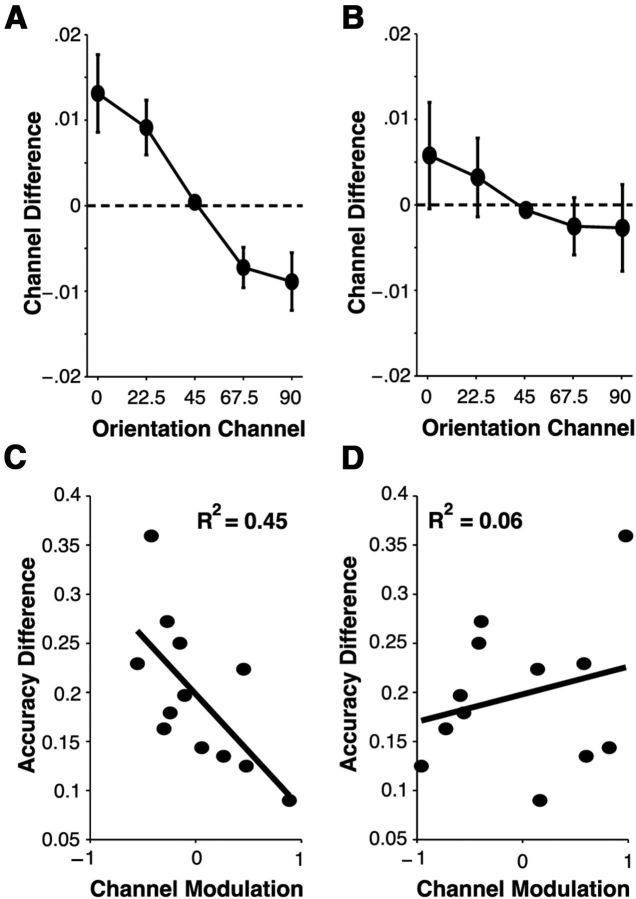Figure 7.
Loss of feature selectivity in population responses. A, B, Channel differences were estimated by subtracting channel responses in population tuning functions observed in set size 2 trials from those observed in set size 1 trials for contralateral (A) and ipsilateral (B) hemispheres. Positive channel differences represent larger channel responses for set size 1 population tuning functions; negative channel differences represent larger channel responses for set size 2 population tuning functions. For contralateral ROIs, a loss of selectivity associated with attending multiple items was observed—represented as a reduction in on-channel responses and increase in off-channel responses for set size 2 compared with set size 1 population tuning functions—whereas no loss of selectivity was observed in ipsilateral ROIs. C, D, Individual differences in the loss of feature selectivity predict declines in behavioral performance. Differences in behavioral accuracy (set size 1 − set size 2) were plotted as a function of channel modulation in both contralateral (C) and ipsilateral (D) ROIs. For contralateral ROIs, channel modulation predicted behavioral costs in accuracy, such that a more negative slope in channel differences (A) corresponded to a larger set-size-dependent cost in accuracy (p < 0.01). This link was not observed in ipsilateral ROIs (p = 0.41).

